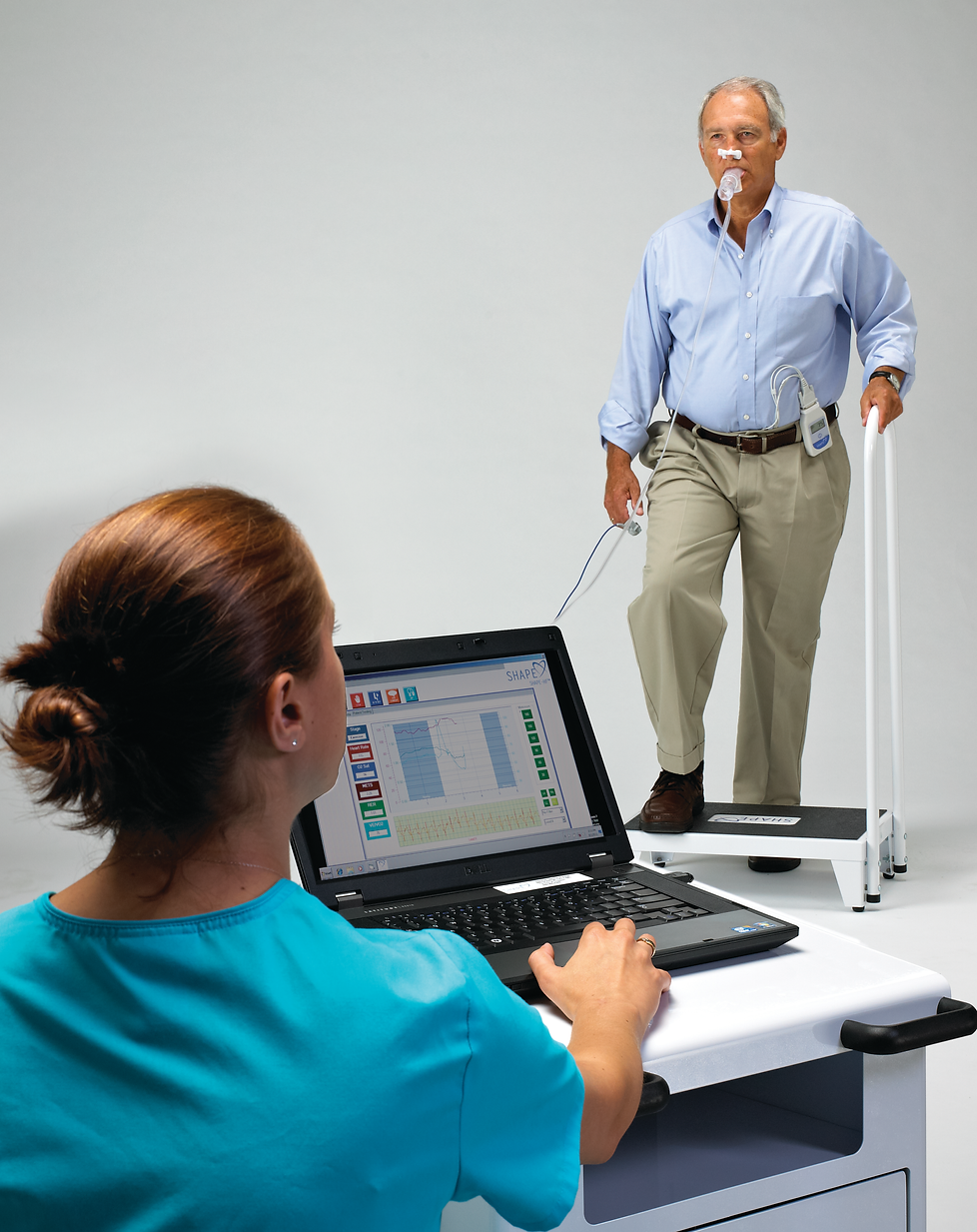
* Disease? Primary Cause? Dyspnea can be caused by disease in the lungs, heart, or pulmonary vasculature. Frequently there are multiple contributors as chronic diseases are complex and have effects across the entire system. Unless all major contributors are identified and treated, symptoms won't resolve. Shape testing identifies functional limitations in every element of the cardiopulmonary/pulmonary vascular system to guide further diagnostic testing and specialty referral
* Deconditioning in the "worried well": Many dyspneic patients are not diseased but are simply overweight and/or deconditioned. They only need to be put on an exercise and/or weight loss program for therapy. Shape testing shows disease risks. When risks are minimal, patients may safely be put on an exercise/weight loss regimen without extensive further testing.
* Deconditioning in patients on therapy: Shape testing helps patients take responsibility for their role in successful therapy. Patients on therapy for chronic dyspnea-causing diseases frequently do not exercise sufficiently and become deconditioned. If symptoms recur after initially successful therapy, and Shape testing shows increasing deconditioning but no disease advance, this may serve as a reminder to patients to participate in regular exercise.
New Patient Short of Breath Why?

* Therapy Tracking and Recurrent Shape Testing: when a chronic dyspnea-causing disease is diagnosed without exercise testing, performing a Shape test for a pre-therapy physiological baseline is indicated and may be helpful in guiding downstream care management. Post-therapy testing objectively measures treatment response augmenting patient self-reporting. In this way Shape testing is foundational for goal-directed evidence-based treatment management.
* When Symptoms Recur or Worsen: This situation opens three possibilities: that the primary disease is advancing/treatment is failing, that a co-morbid condition has emerged that is responsible for the symptoms, or that the patient has become deconditioned. Shape testing quickly answers these questions. The reflexive assumption, that worsening dyspnea results from disease progression, may not be entirely correct. Disease that cause dyspnea frequently originate in one organ system, and later go onto cause or be accompanied by co-morbidities in other parts of the circuit. For example, advanced COPD is frequently accompanied by pulmonary hypertension and heart failure. Monitoring a patient on COPD therapy would identify an emerging cardiac or pulmonary vascular condition, providing an opportunity to intervene earlier and improve prognosis.
